You can select a suitable sport mode from the predefined sport modes. Depending on the sport, different information is shown on the display during exercise. For example, the sport mode specifies whether FusedSpeed
TM
or plain GPS speed is used. (For more information, see FusedSpeed .) The selected sport mode also affects exercise settings, such as HR limits, autolap distance and recording rate.
In Movescount you can create more custom sport modes, edit the predefined sport modes and download them to your device.
NOTE:
SWOLF is used to calculate swimming efficiency. It is a combination of swim time and number of strokes over a specific pool length.
Additional options in sport modes
When a sport mode is selected, keep Next pressed to access additional options to be used during your exercise:

Using heart rate belt
A heart rate belt can be used during exercise. When you use a heart rate belt, Suunto Ambit2 S gives you more information about your activities.
Using a heart rate belt enables the following additional information during exercise:
- heart rate in real time
- average heart rate in real time
- heart rate in graph form
- calories burned during exercise
- guidance to exercise within defined heart rate limits
- Peak Training Effect
Using a heart rate belt enables the following additional information after exercise:
- calories burned during exercise
- average heart rate
- peak heart rate
- recovery time
Troubleshooting: No heart rate signal
If you lose the heart rate signal, try the following:
- Check that you are wearing the heart rate belt correctly (see Putting on heart rate belt ).
- Check that the electrode areas of the heart rate belt are moist.
- Replace the battery of the heart rate belt, if problems persist.
- Re-pair your heart rate belt with the device (see Pairing POD/heart rate belt ).
- Machine-wash the textile strap of the heart rate belt regularly.
Putting on heart rate belt
NOTE:
Suunto Ambit2 S is compatible with Suunto ANT Comfort Belt.
Adjust the strap length so that the heart rate belt is tight but still comfortable. Moisten the contact areas with water or gel and put on the heart rate belt. Ensure the heart rate belt is centered on your chest and the red arrow is pointing up.

WARNING:
People who have a pacemaker, defibrillator, or other implanted electronic device use the hear rate belt at their own risk. Before starting the initial use of the heart rate belt, we recommend an exercise test under a doctor’s supervision. This ensures the safety and reliability of the pacemaker and heart rate belt when being used simultaneously. Exercise may include some risk, especially for those who have been inactive. We strongly advise you to consult your doctor prior to beginning a regular exercise program.
NOTE:
Suunto Ambit2 S cannot receive the heart rate belt signal under water.
TIP:
Machine-wash the heart rate belt regularly after use to avoid unpleasant odor and to ensure good data quality and functionality. Only wash the textile strap.
Suunto Ambit2 S supports ANT+
TM
compatible heart rate belts and certain PODs. Visit www.thisisant.com/directory for a list of compatible ANT+ products.
Starting exercise
To start exercising:
- Moisten the contact areas and put on the heart rate belt (optional).
- Press Start Stop to enter the start menu.
- Press Next to enter Exercise .
- Scroll the sport mode options with Start Stop or Light Lock and select a suitable mode with Next
- The watch automatically starts searching for a heart rate belt signal, if the selected sport mode uses a heart rate belt. Wait for the watch to notify that the heart rate and/or GPS signal have been found, or press Start Stop to select Later . The watch continues to search the heart rate/GPS signal.
Once the heart rate/GPS signal has been found, the watch starts showing and recording heart rate/GPS data.
- Press Start Stop to start recording your exercise. To access the options menu, keep Next pressed (see Additional options in sport modes ).

During exercise
Suunto Ambit2 S gives you additional information during your exercise. The additional information varies depending on the sport mode you have selected, see Sport modes . You will also get more information, if you use a heart rate belt and GPS during exercise.
Suunto Ambit2 S allows you to define what information you want to see on the display. For information on customizing the displays, see Custom sport modes .
Here are some ideas on how to use the watch during exercise:
- Press Next to see additional displays.
- Press View to see additional views.
- To avoid accidentally stopping your log recording or making unwanted laps, lock the buttons by keeping Light Lock pressed.
- Press Start Stop to pause recording. The pause will be shown in your log as a lap mark. To resume recording, press Start Stop again.
Recording tracks
Depending on the sport mode you have selected, your Suunto Ambit2 S allows you to record various information during exercise.
If you are using GPS while recording a log, Suunto Ambit2 S will also record your track and you can view it in Suunto app. When you are recording your track, the recording icon and the GPS icon are shown on the upper part of the display.
Making laps
During your exercise, you can make laps either manually or automatically by setting the autolap interval in Movescount. When you are making laps automatically, Suunto Ambit2 S records the laps based on the distance you have specified in Movescount.
To make laps manually, press Back Lap during the exercise.
Suunto Ambit2 S shows you the following information:
- top row: split time (duration from the start of the log)
- middle row: lap number
- bottom row: lap time

NOTE:
The exercise summary always shows at least one lap, your exercise from start to finish. The laps you have made during the exercise are shown as additional laps.
Recording altitude
Your Suunto Ambit2 S stores all your movements in altitude between the start and stop time of the log. If you are engaged in an activity in which your altitude changes, you can record the altitude changes and view the stored information later.
To record altitude:
- Press Start Stop to enter the start menu.
- Press Next to select Exercise .
- Scroll the sport modes with Start Stop or Light Lock and select a suitable mode with Next .
- Wait for the watch to notify that the heart rate and/or GPS signal have been found, or press Start Stop to select Later . The watch continues to search the heart rate/GPS signal. Press Start Stop to start recording the log.

NOTE:
Suunto Ambit2 S uses GPS to measure altitude.
Using compass during exercise
You can activate the compass and add it to a custom sport mode during your exercise.
To use the compass during exercise:
- While you are in a sport mode, keep Next pressed to access the options menu.
- Scroll to Activate with Light Lock and select with Next .
- Scroll to Compass with Light Lock and select with Next .
- The compass is shown as the last display on the custom sport mode.

To deactivate the compass, go back to Activate in the options menu and select End compass .
Using interval timer
You can add an interval timer to each custom sport mode in Movescount. To add the interval timer to a sport mode, select the sport mode and go to Advanced settings . The next time you connect your Suunto Ambit2 S to your Movescount account, the interval timer will be synchronized to the watch.
You can specify the following information in the interval timer:
- interval types ( high and low interval)
- the duration or distance for both interval types
- the number of times the intervals are repeated
NOTE:
If you do not set the number of repetitions for the intervals in Movescount, the interval timer will continue until it has been repeated 99 times.
To activate/deactivate the interval timer:
- While you are in a sport mode, keep Next pressed to access the options menu.
- Scroll to activate with Light Lock and select with Next .
- Scroll to Interval with Start Stop and select with Next .
- Press Start Stop or Light Lock to set the interval timer On/Off and accept with Next . When the interval timer is active, the interval icon is shown on the top of the display.

Navigating during exercise
If you want to run a route or to a point of interest (POI), you can select the respective default sport mode (Run a Route, Run a POI) from the Exercise menu to begin navigating immediately.
You can also navigate a route or to a POI during your exercise in other sport modes that have GPS activated.
To navigate during exercise:
- While you are in a sport mode with GPS activated, keep Next pressed to access the options menu.
- Press Next to select navigation .
- Scroll to POIs (Points of interest) or Routes with Light Lock and select with Next .
The navigation guidance is shown as the last display on the selected sport mode.

To deactivate navigation, go back to Navigation in the options menu and select End navigation .
Finding back during exercise
Suunto Ambit2 S automatically saves the starting point of your exercise, if you are using GPS. During exercise, Suunto Ambit2 S guides you back to the starting point (or to the location where the GPS fix was established) with the Find back functionality.
To find back to the starting point during exercise:
- While you are in a sport mode, keep Next pressed to access the options menu.
- Press Next to select navigation .
- Scroll to Find back with Start Stop and select with Next . The navigation guidance is shown as the last display on the selected sport mode.

Using Track back
With Track back , you can retrace your route at any point during an exercise. Suunto Ambit2 S creates temporary waypoints to guide you back to your starting point.
To track back during exercise:
- While you are in a sport mode, keep Next pressed to access the options menu.
- Press Next to select Navigation .
- Scroll to Track back with Start Stop and select with Next .

You can now start navigating your way back the same way as during route navigation. For more information about route navigation, see During navigation .
Track back can also be used from the logbook with exercises that include GPS data. Follow the same procedure as in Navigating a route . Scroll to Logbook instead of Routes , and select a log to start navigating.
Autopause
Autopause pauses the recording of your exercise when your speed is less than 2 km/h. When your speed increases to more than 3 km/h, the recording continues automatically.
You can set autopause to on/off for each sport mode in Movescount. Alternatively, you can activate autopause during exercise.
To set autopause on/off during exercise:
- While you are in a sport mode, keep Next pressed to access the options menu.
- Scroll to Activate with Light Lock and select with Next .
- Scroll to Autopause with Start Stop and select with Next .
- Press Start Stop or Light Lock to set autopause On/Off and accept with Next .

Viewing logbook after exercise
You can view the summary of your exercise after you have stopped recording.
To stop recording and view the summary information:
- Keep Start Stop pressed to stop and save the exercise. Alternatively, you can press Start Stop to pause the recording. After pausing the log, confirm stopping by pressing Back Lap , or continue recording by pressing Light Lock . After stopping the exercise, save the log by pressing Start Stop . If you do not want to save the log, press Light Lock .
- Press Next to view the exercise summary.

You can also view the summaries of all your saved exercises in the logbook. In the logbook the exercises are listed according to time and the latest exercise is shown first. The logbook can store approximately 15 hours of exercises with the best GPS accuracy and 1 second recording interval.
To view the summary of your exercise in the logbook:
- Press Start Stop to enter the start menu.
- Scroll to Logbook with Light Lock and enter with Next . Your current recovery time is shown.
- Scroll the exercise logs with Start Stop or Light Lock and select a log with Next .
- Browse the summary views of the log with Next .

Memory left indicator
If more than 50 % of the watch memory has not been synchronized, Suunto Ambit2 S displays a reminder when you enter the logbook.

The reminder is not displayed once the unsynced memory is full and Suunto Ambit2 S begins overwriting old logs.
Dynamic exercise summary
The dynamic exercise summary shows the active fields from your exercise as a summary. You can browse the summary views with Next .
The information shown on the summary depends on the sport mode you used, and whether you used a heart rate belt or GPS.
By default, all the sport modes include the following information:
- sport mode name
- time
- date
- duration
- laps
NOTE:
If you select cumulative ascent/decent as a display option, the data will only be shown if you have also selected best GPS accuracy. For more information about GPS accuracy, see GPS accuracy and power saving .
TIP:
You can access more detailed data in Suunto app.
Recovery time
Suunto Ambit2 S always shows your current cumulative recovery time from all your saved exercises. The recovery time indicates how long it takes for you to fully recover and be ready to exercise with full intensity. As your recovery time decreases or increases, the watch updates it in real time.
To view your current recovery time:
- Press Start Stop to enter the start menu.
- Scroll to Logbook with Light Lock and select with Next .
- The recovery time is shown on the display.




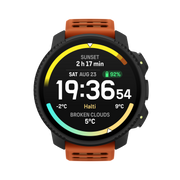


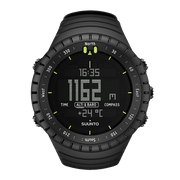






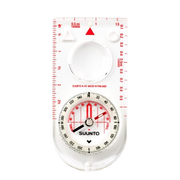






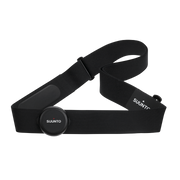
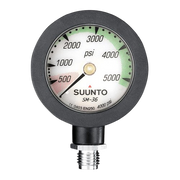

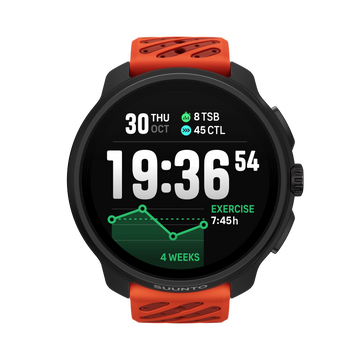


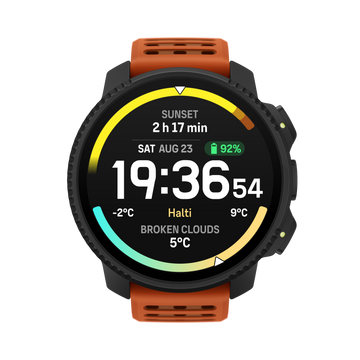

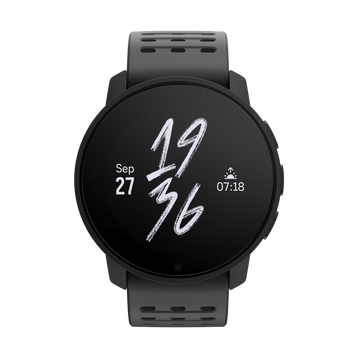
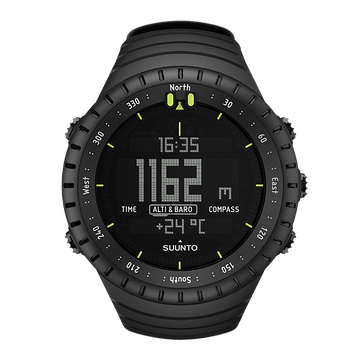

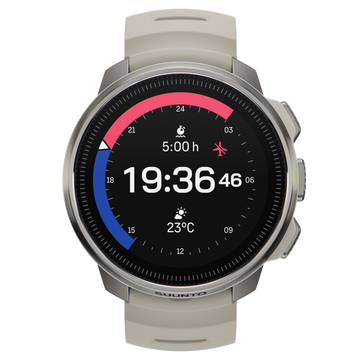
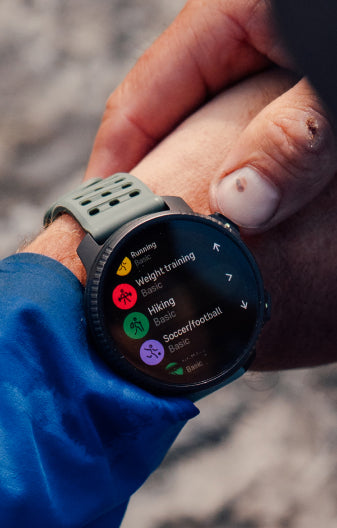

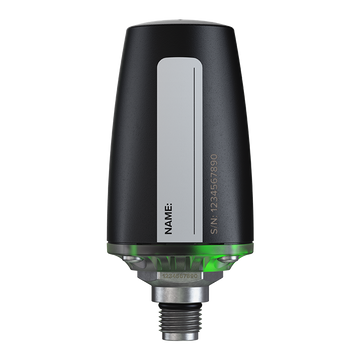

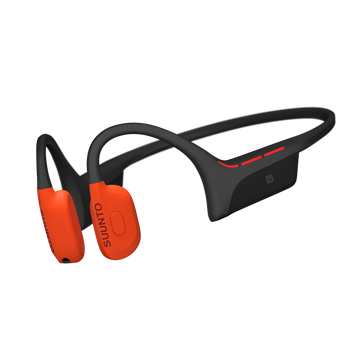



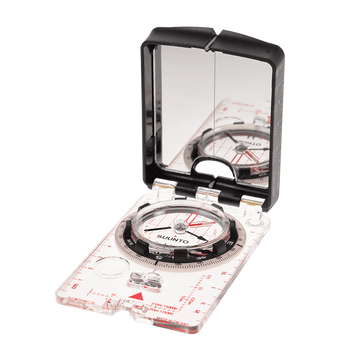
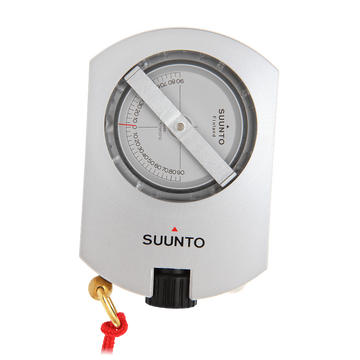

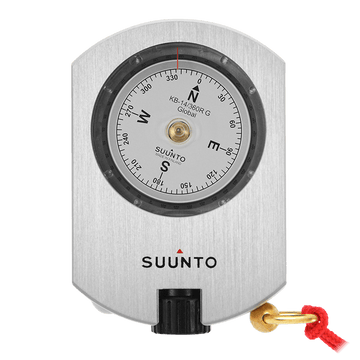

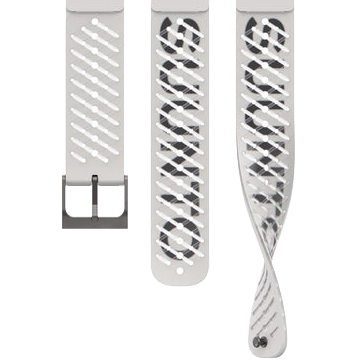



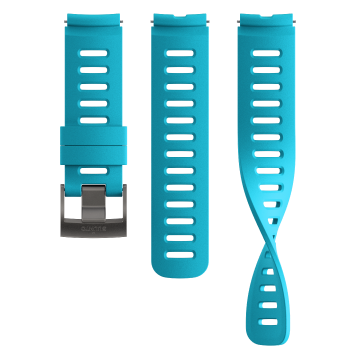

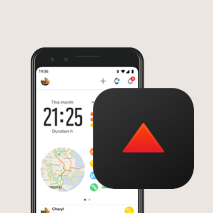







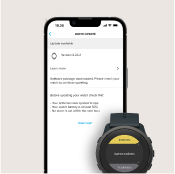









 5.
5.























































